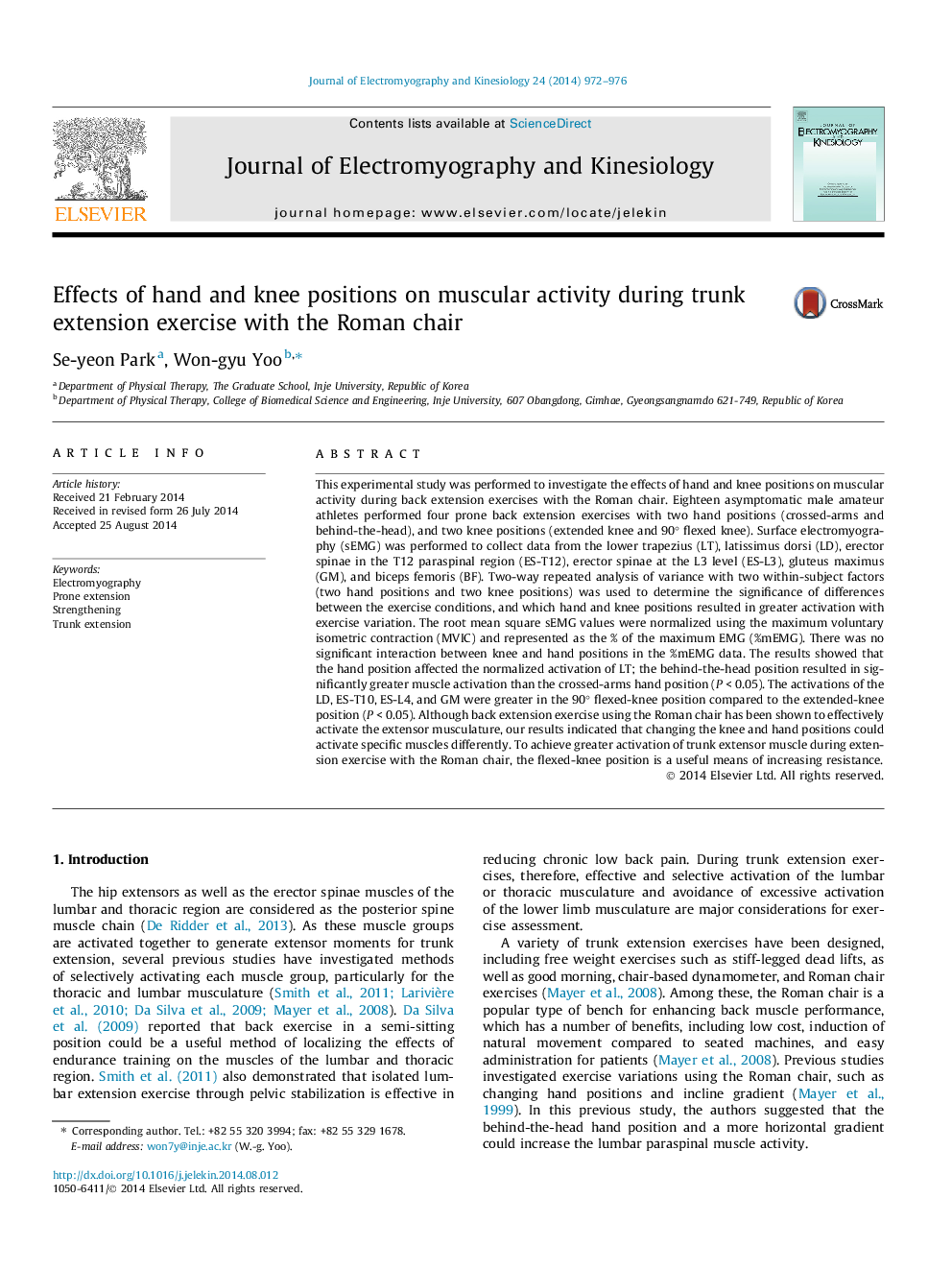| کد مقاله | کد نشریه | سال انتشار | مقاله انگلیسی | نسخه تمام متن |
|---|---|---|---|---|
| 4064481 | 1266211 | 2014 | 5 صفحه PDF | دانلود رایگان |
This experimental study was performed to investigate the effects of hand and knee positions on muscular activity during back extension exercises with the Roman chair. Eighteen asymptomatic male amateur athletes performed four prone back extension exercises with two hand positions (crossed-arms and behind-the-head), and two knee positions (extended knee and 90° flexed knee). Surface electromyography (sEMG) was performed to collect data from the lower trapezius (LT), latissimus dorsi (LD), erector spinae in the T12 paraspinal region (ES-T12), erector spinae at the L3 level (ES-L3), gluteus maximus (GM), and biceps femoris (BF). Two-way repeated analysis of variance with two within-subject factors (two hand positions and two knee positions) was used to determine the significance of differences between the exercise conditions, and which hand and knee positions resulted in greater activation with exercise variation. The root mean square sEMG values were normalized using the maximum voluntary isometric contraction (MVIC) and represented as the % of the maximum EMG (%mEMG). There was no significant interaction between knee and hand positions in the %mEMG data. The results showed that the hand position affected the normalized activation of LT; the behind-the-head position resulted in significantly greater muscle activation than the crossed-arms hand position (P < 0.05). The activations of the LD, ES-T10, ES-L4, and GM were greater in the 90° flexed-knee position compared to the extended-knee position (P < 0.05). Although back extension exercise using the Roman chair has been shown to effectively activate the extensor musculature, our results indicated that changing the knee and hand positions could activate specific muscles differently. To achieve greater activation of trunk extensor muscle during extension exercise with the Roman chair, the flexed-knee position is a useful means of increasing resistance.
Journal: Journal of Electromyography and Kinesiology - Volume 24, Issue 6, December 2014, Pages 972–976
